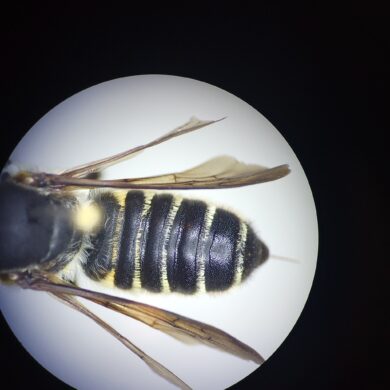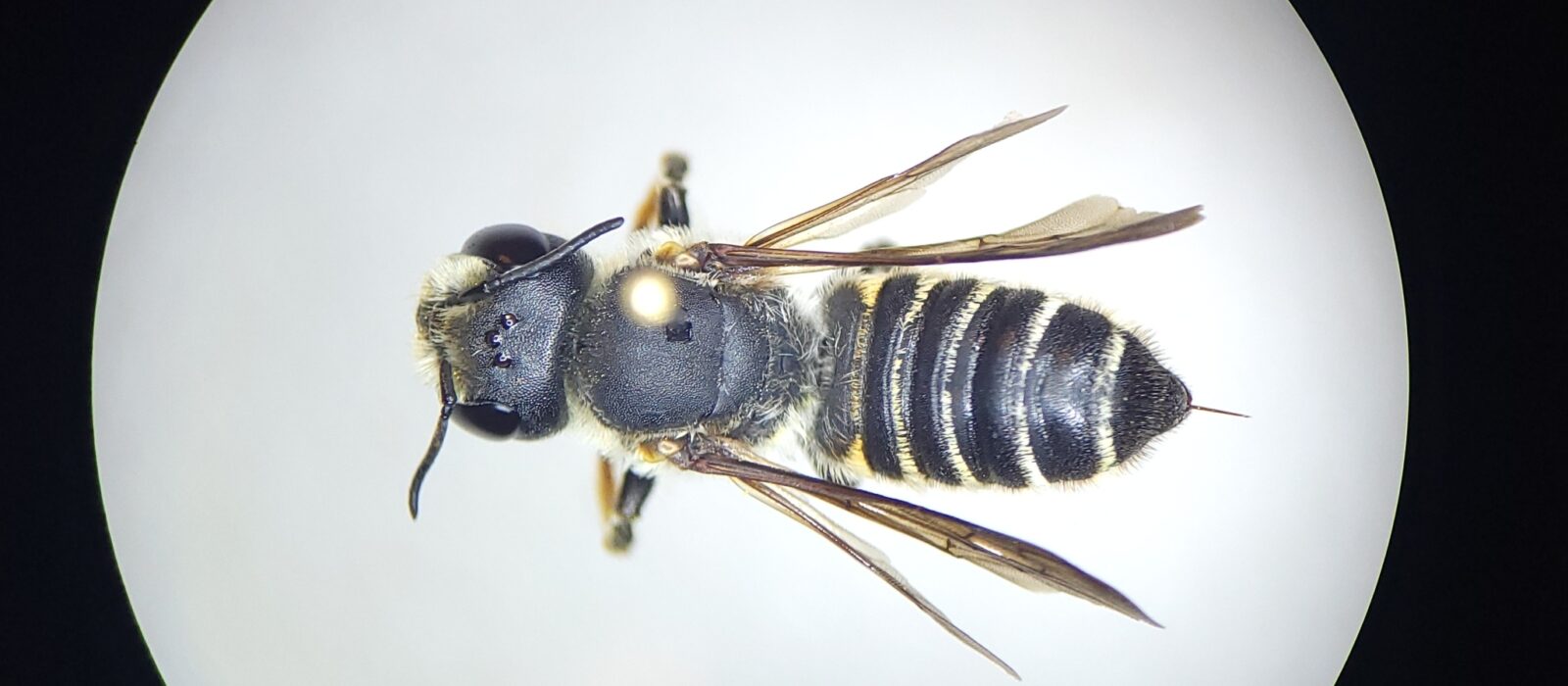
A New Bee Species for Martha’s Vineyard
Collected at Thimble Farm, Tisbury, on September 22, 2023, a specimen of the leaf-cutter bee Megachile inimica documented a new species of bee for Martha’s Vineyard. The Vineyard bee checklist now stands at 197 species.
Sometimes called the hostile leaf-cutter bee, M. inimica is a large species (“…quite hunky really, a bee’s bee,” opines a USGS Eastern Ecological Science Center information page on the species). The female specimen from Thimble Farm is about 16 mm long, more slender but longer than most bumblebees. Like most other members of this large genus, female M. inimica are equipped with stout mandibles. These are used to cut small disks from leaves, which the female bees use to separate egg chambers in their nests, built in tunnels in wood. The head of this bee species is conspicuously large, perhaps to contain the musculature needed to operate the impressive mandibles.

The impressive mandibles of Megachile inimica
Little detailed information on the ecology of this bee seems to be available, but various websites concur that during its late-season flight period, this bee associates mostly with yellow flowers in the composite family, such as sunflowers, Bidens, or, in the case of the bee found at Thimble Farm, black-eyed Susan (Rudbeckia hirta).
The bee was found during fieldwork for a multi-year study of pollinators on Vineyard farms. BiodiversityWorks’ Martha’s Vineyard Atlas of Life program is the scientific contractor for this study, which is being run by the Betsy and Jesse Fink Family Foundation. Eight Island farms are participating in the study, which seeks to document to importance of farms to local pollinator populations and develop workable methods for farms to be even more helpful to this important class of insects. A report on the project’s first year, in 2022, can be read here.
Naturalist Matt Pelikan is the director of the Martha’s Vineyard Atlas of Life project at BiodiversityWorks.
